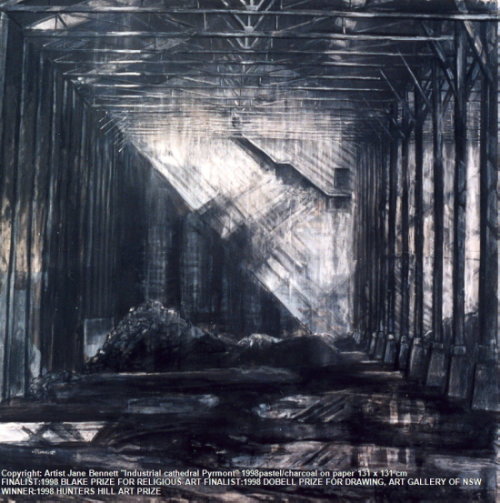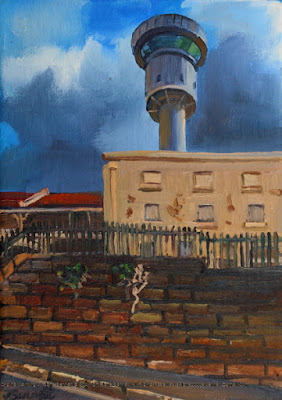The 'Wonga' was built in 1983 and was one of the Svitzer 'pusher' tugs.
Their names started with 'W' - Wilga, Wonga, Woona, Walan, Watagan. I've no idea why they picked that particular letter to christen their tugs. As a 'wonga' is a type of pigeon, not a marine bird, I'm not sure why this name was chosen for a marine vessel.
To me, the trio of names 'Wilga', 'Wonga', 'Woona', had a sort of alliterative poetry, and whenever I painted one of the three, I would be asked if I also had paintings of the other two, to make up the set.

DH236 'The tug 'Wonga' with 'Victorian Reliance''
2007 oil on board 20 x 25cm
SOLD
Enquiries about other paintings of tugsThis shows the 'Wonga' in action with a cargo ship.
They were once a very common sight in Sydney Harbour, when Sydney Harbour was still a fully working port. As 'Artist in Residence' on the East Darling Harbour Wharves during the first decade of this century, I would see at least one of these tugs everyday. If they weren't accompanying one of the container ships or Ro-ros (roll-on roll-off car vessels) to the East Darling Harbour Wharves, Glebe Island or White Bay, they would be escorting a cruise ship to the Cruise ship terminal at Darling Harbour Wharf 8, or an oil tanker to Gore bay.

DH241 'The 'Wonga' 2011
oil on board 28 x 35cm
Available This painting shows the 'Wonga' passing Goat Island. It was on its way to a new task, from its then home in East Balmain next to the ferries.
The number of tugs in Sydney Harbour declined with the closure of East Darling Harbour Wharves and its replacement with the controversial Barangaroo development project.
This earlier painting shows the 'Wonga' passing Balmain.
Now, the 'Wonga' is one of the 2 tugs (the other being the 'Walan') based at Port Pirie which is located 223 kilometres north of Adelaide at the top of Upper Spencer Gulf,
Port Pirie, a small town of 16,000, is still home to the type of heavy industry now removed from Sydney Harbour. The Nyrstar concentrate smelter in Port Pirie is one of the largest smelters in the world.
Related Posts













